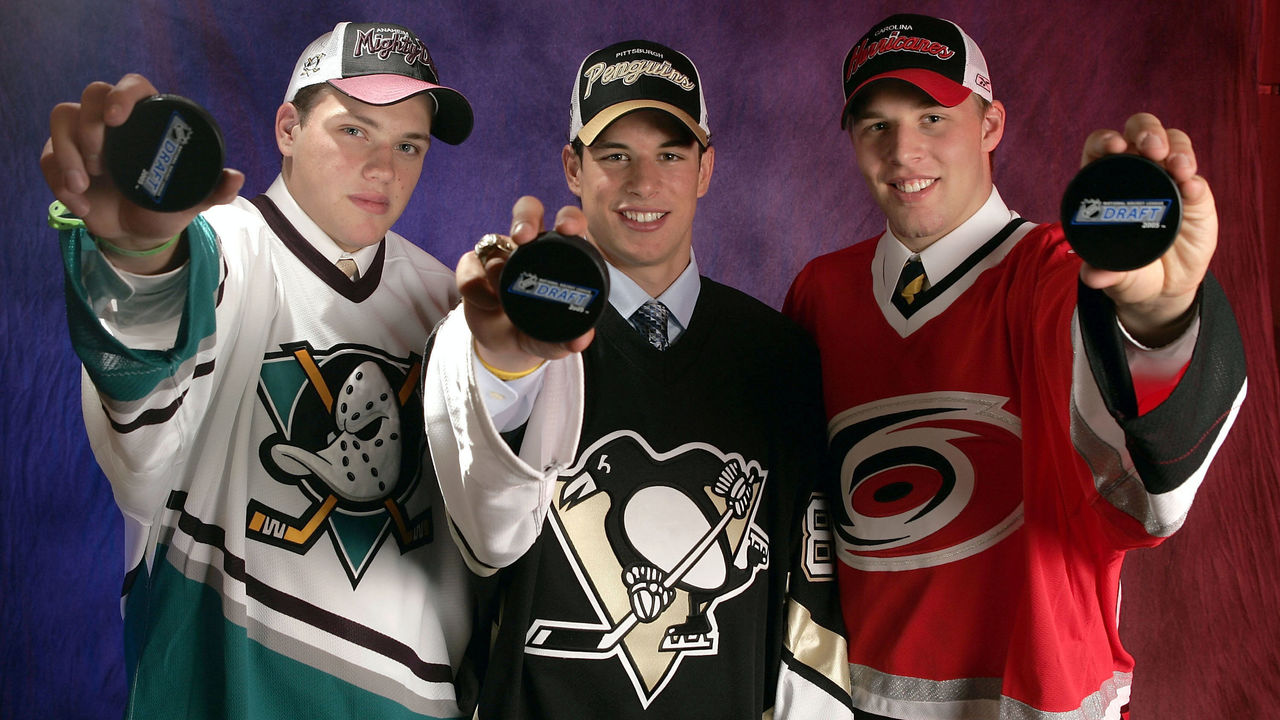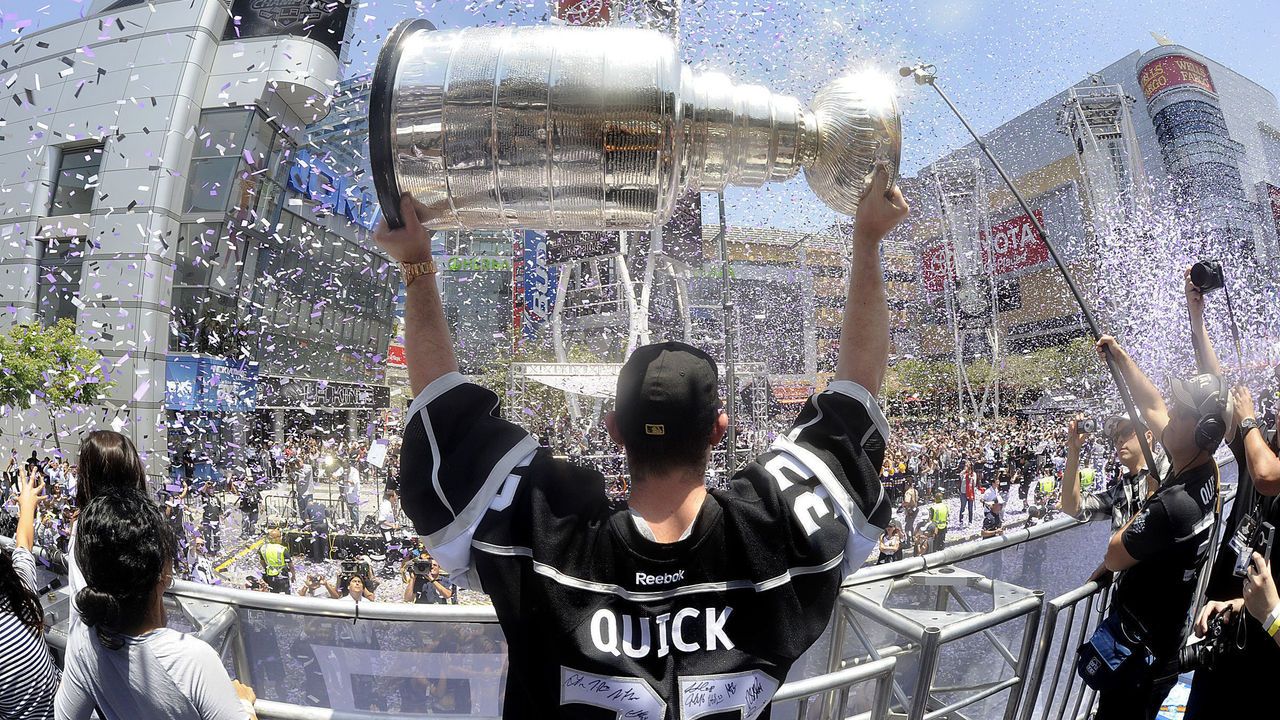When 31 general managers log on, in June or in the fall, to the NHL's first virtual draft, expect the proceedings to evoke the spirit of the Sidney Crosby sweepstakes - the last player bonanza the league held under such weird circumstances.
The upcoming draft shares a certain symmetry with the 2005 edition, and not only because touted top prospect Alexis Lafreniere - like Crosby - hails from the QMJHL's Rimouski Oceanic. Anomalous events will have forced the league to reschedule and relocate both drafts: to the Westin Hotel in downtown Ottawa, in the case of Crosby's entry to the league, and, presumably, to executives' home offices across the U.S. and Canada in this moment of physical distancing.
GMs in recent weeks have expressed objection to staging this draft in June, considering the 2019-20 season might yet resume in some form afterward. The typical selection process has been upended, sort of like it was when the overdue conclusion of a 10-month lockout forced the league to move the show on short notice to a muted conference room.
It was a peculiar setting for a transformative weekend in league history: July 30-31, 2005, when the Penguins capitalized on their luck in a free-for-all lottery by picking the superstar who's since led them to three Stanley Cups - and when several other storylines that would change the NHL were spoken into existence.

Ahead of the 2020 draft's particular unorthodoxy, let's relive some of those subplots from '05: the legendary batch of goalies selected, the crestfallen teams that shortly thereafter won the Cup anyway, the negation of a possible Crosby-Alex Ovechkin partnership, and more.
Penguins' odds pay off
With no 2004-05 standings from which to set a draft order, the NHL modified its rules for the 2005 lottery to give every team a weighted shot at the first overall pick - and the 17-year-old center who'd spent the span of the lockout racking up 168 points in the QMJHL.
The league conferred the best odds - three lottery balls in the draw - to the four teams that hadn't reached the last three postseasons or won any of the past four lotteries: Pittsburgh, Buffalo, Columbus, and the Rangers. (The Blue Jackets and Penguins drafted No. 1 in 2002 and 2003, respectively, but only after Florida earned and traded both picks.) Ten teams received two balls each for making one of those postseasons or winning one of those lotteries. The remainder of the league's clubs got a single ball apiece.
That distribution left Pittsburgh with a mere 6.25% (1-in-16) chance to earn the top selection, scarcely exceeding most other teams' odds of 2.08% (1-in-48) and undermining the belief of cynics and conspiracy theorists that the NHL rigged the lottery to save the Penguins from bankruptcy. Fortune smiled on Pittsburgh that July, while the Blue Jackets landed at sixth overall and the Sabres and Rangers fell out of the top 10.
The upshot of 2004
It was a stroke of luck that revived the Penguins and guaranteed the franchise would evolve into a perennial contender. But history might have unfolded differently if not for a previous setback.
The last time NHL hockey had been played, in 2003-04, the Penguins' 58 points constituted the worst regular-season total in the league. Yet despite a lottery format stacked heavily in favor of the last-place club, Pittsburgh lost the ensuing draw to the Capitals, who also jumped Chicago for the right to draft Ovechkin and, as a result, received only one ball in the Crosby raffle.
What twilight-zone scenario might have ensued had the Penguins won the 2004 lottery and selected Ovechkin, thereby enabling the Blackhawks to take Evgeni Malkin at No. 2 and leaving Washington without a foundational star? The Capitals, Sabres, Blue Jackets, and Rangers would have all seen their odds to land Crosby improve slightly, but imagine this: Maybe Pittsburgh's remaining two balls would have been sufficient to win again, empowering the Penguins to deploy Ovechkin on Crosby's wing for the duration of their careers.
Champs near the top
How's this for an only-in-2005 moment - an oddity befitting a unique draft. Two teams finished below .500 in '03-04 and received top-three picks that, achingly, didn't net them the generational talent available. Those clubs then combined to win the next two Stanley Cups, beating Pittsburgh to the prize even as Crosby became the NHL's first teenaged Art Ross Trophy winner.

Carolina and Anaheim lifted the Cup in 2006 and 2007, respectively, but each did so without its top '05 draftee on the roster. The Hurricanes dealt defenseman Jack Johnson, the No. 3 pick, to the Kings following their championship season - before Johnson left the University of Michigan to turn pro. Bobby Ryan, the Ducks' selection at No. 2, made his NHL debut in 2007-08 as GM Brian Burke's club set about defending its title.
Of all people, Darren Helm - a fifth-round pick at No. 132 - was the first player from the 2005 draft class to lift the Stanley Cup; he centered the Red Wings' fourth line during their triumphant postseason run in 2008. (Two other Detroit draftees from 2005, second-rounder Justin Abdelkader and fourth-rounder Mattias Ritola, each played a pair of games that season but didn't feature in the playoffs.)
Greatest goalie draft ever?
That statement is true in recent memory at minimum. The 2005 draft produced four current NHL starters - Carey Price (No. 5 overall), Tuukka Rask (No. 21), Jonathan Quick (No. 72) and Ben Bishop (No. 85) - but a simple list of names woefully undersells the merit of their collective efforts this past decade:
Two of those goalies - Price and Rask - have each won a Vezina Trophy; Bishop has been a finalist on three occasions, and Quick twice.
Quick won the Conn Smythe Trophy and the Stanley Cup in 2012 and backstopped Los Angeles to another championship in 2014.
Rask helped the Bruins reach the final in 2013 and 2019; Bishop did the same with the Lightning in 2015.
Price's astounding .972 save percentage - he allowed three goals in five games - led Canada to gold at Sochi in 2014 during the last best-on-best Olympic tournament.
Bishop, Price, and Rask each boast one NHL season with a save percentage greater than .930, marks that land in the top 25 all time.
Rask led the NHL in Goals Saved Above Average when the league halted the 2019-20 season. Bishop, now playing in Dallas, ranked fifth; he was tops in that category last season.

The crop of goalies drafted in 2012 is comparable in quality and depth. Andrei Vasilevskiy (No. 19 overall) was the 2018-19 Vezina recipient; Connor Hellebuyck (No. 130) is favored to win this season; Matt Murray (No. 83) is a two-time Stanley Cup champion; Frederik Andersen (No. 87) can generally be counted upon across 60-plus starts per year. But the netminding alumni of Ottawa's Westin draft in 2005 have set a formidably high standard.
Surprise success stories
Crosby, Anze Kopitar (the No. 11 pick in 2005), and Paul Stastny (No. 44) are first, second, and third in their draft class in career scoring, a telltale measure of sustained excellence. Keith Yandle would have surely been selected far earlier than 105th overall if any front office figured he'd rise to fourth on that leaderboard.
| 2005 draft | Pos. | Player | GP | G | A | PTS |
|---|---|---|---|---|---|---|
| No. 1 | C | Sidney Crosby | 984 | 462 | 801 | 1263 |
| No. 11 | C | Anze Kopitar | 1073 | 333 | 617 | 950 |
| No. 44 | C | Paul Stastny | 945 | 250 | 476 | 726 |
| No. 105 | D | Keith Yandle | 976 | 99 | 474 | 573 |
| No. 24 | RW | T.J. Oshie | 803 | 238 | 329 | 567 |
| No. 2 | RW | Bobby Ryan | 833 | 254 | 301 | 555 |
| No. 33 | LW | James Neal | 821 | 289 | 256 | 545 |
| No. 62 | D | Kris Letang | 808 | 127 | 410 | 537 |
| No. 230 | RW | Patric Hornqvist | 770 | 238 | 242 | 480 |
| No. 25 | C | Andrew Cogliano | 1012 | 165 | 234 | 399 |
In a sense, Yandle, the slick, durable Panthers defenseman who hasn't missed a game in 11 years, is characteristic of the 2005 draft as a whole. Players taken all over the board have distinguished themselves in unexpected ways. The class of 2005 includes:
Another renowned hockey ironman in Cogliano, the No. 25 overall pick who appeared in 830 consecutive regular-season games from 2007-18. That's the seventh-longest run in NHL history; Yandle is fourth at 866 games and counting, with two spots between him and Doug Jarvis' decades-old benchmark of 964.
A Stanley Cup hero selected last overall. Hornqvist, the 230th pick, scored the title-winning goal when Pittsburgh knocked off Nashville - the team that drafted him - in 2017.
The NHL's all-time shortest skater in 5-foot-4 Nathan Gerbe. The No. 142 pick stands one inch taller than Roy Worters, a Hall of Fame goalie from the pre-Original Six era.
Several top defensemen selected after the first round: Marc-Edouard Vlasic (No. 35), the only player from this class aside from Kopitar and Cogliano who's eclipsed 1,000 games played; Anton Stralman (No. 216), the lone seventh-rounder beyond Hornqvist still in the league; and Letang (No. 62), the six-time All-Star whom Pittsburgh drafted one pick after fellow blue-liner Michael Gergen, a future ECHLer who last played in 2012.

The Capitals comparison
It's worth contrasting the Penguins' headlining hauls from 2004 and 2005 - Malkin and Crosby - with those of Washington, their eternal adversary in the Metropolitan Division. One year after winning the Ovechkin lottery, the Capitals were awarded the No. 14 pick and selected hulking defenseman Sasha Pokulok. He never made the NHL and has played in Quebec's Ligue Nord-Americaine de Hockey since 2012.
Pokulok, to his credit, tore up the LNAH with 60 points in 36 games this season; the French-language Journal de Montreal recently called him the semi-pro circuit's answer to Bobby Orr. It's fair to wonder how his inability to develop as the Capitals once envisioned - a shortfall attributable in part to concussions - hindered the club's championship trajectory. Might Ovechkin have come closer to breaking through before 2018 with the help of another impact teammate?
At least Washington emerged from the lockout with Ovi. At third overall in 2004 and seventh overall in 2005, Chicago selected Cam Barker and Jack Skille, respectively, two players whose journeyman NHL careers rate as disappointments against the expectations of their draft positions. Only the arrivals of Jonathan Toews (No. 3 in 2006) and Patrick Kane (No. 1 in 2007) turned the Blackhawks around, showing - as Pittsburgh did with Crosby - that if a team is bad enough for long enough, it might eventually stumble into a draft worth remembering.
Nick Faris is a features writer at theScore.
Copyright © 2020 Score Media Ventures Inc. All rights reserved. Certain content reproduced under license.